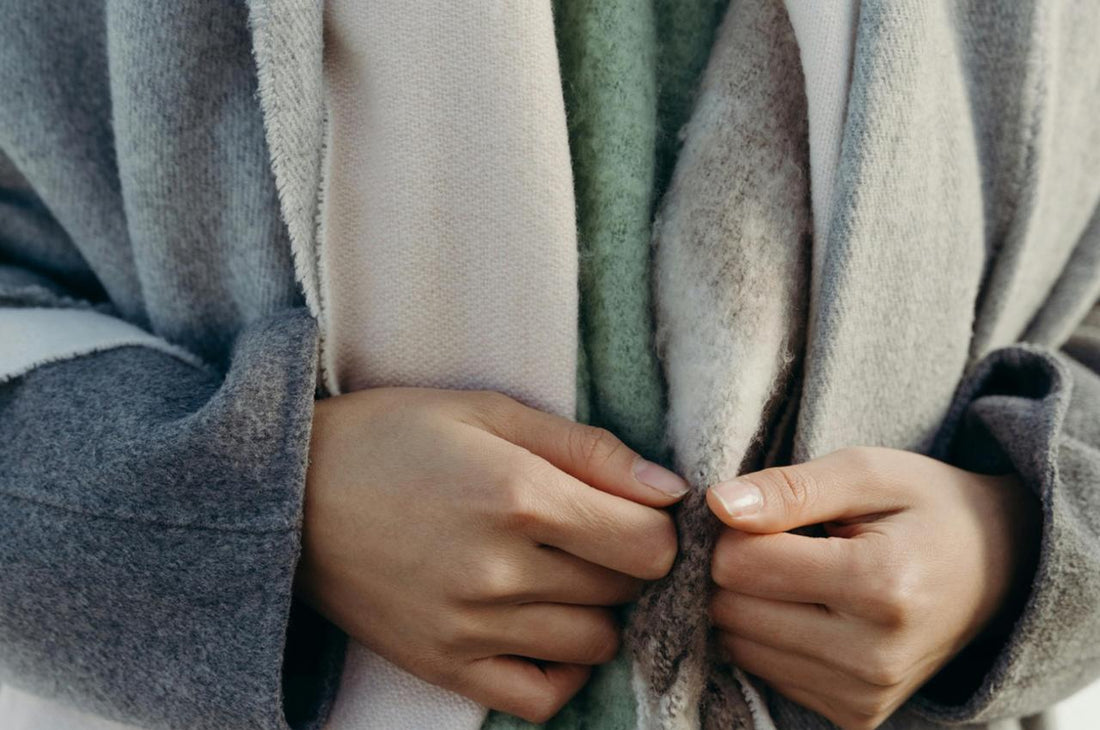
Pashmina Shawls: A Living Legacy of Himalayan Craftsmanship
In today’s fast-moving fashion world, where trends come and go, Pashmina shawls continue to stand out as timeless pieces of luxury and tradition. Made from the ultra-soft wool of the Changthangi goat, found high in the Himalayas, pure pashmina is more than just a fabric. Each handloom pashmina carries the warmth of the mountains, the rhythm of old looms, and the touch of skilled hands that have spent years mastering their craft.
The Science of Pashmina Wool
-
Ultra-fine diameter. Pashmina fibers average 12–19 microns (spider silk thin) vs.. standard cashmere 19–22 microns, giving an unparalleled softness and insulating power.
-
Thermoregulation. The hollow core of Pashmina fibers traps air, creating a natural “thermal bubble” that keeps you warm in winter and cool in summer.
- High tensile strength. Even though Pashmina fibers are very thin, they’re surprisingly strong and flexible. This means the shawl doesn’t tear easily and keeps its shape beautifully over time.
From Goat to Fiber: How Pashmina Is Collected
- Gentle combing: Every spring, skilled workers gently comb the soft undercoat from Changthangi goats high up in the mountains. This doesn’t hurt the animals and gives us the soft wool called Pashm.
- Careful cleaning: The raw wool has some rough hairs, dust, and tiny bits of grass. Experts sort it by hand to remove anything that doesn’t belong—this step is super important for making soft, high-quality shawls.
- Washing: The cleaned wool is washed in warm water with a gentle, natural soap. This removes oils and dirt without harming the delicate fibers. The water is rinsed again and again until it runs clear.
Spinning and Dyeing: Turning Wool into Magic
-
Hand-spinning: Skilled artisans use a small wooden spinning wheel, called a chakki, to gently twist the soft wool into thin yarn. This step decides how fine and even the thread will be, which affects how soft and smooth the final shawl feels.
- Natural dyeing: Many Pashmina makers now use eco-friendly dyes that are gentle on the wool and better for the environment. These dyes give beautiful colors without damaging the fiber.
- Quality checks: Before weaving begins, small samples of the yarn are checked under a microscope. This helps make sure the thickness of the wool is even and the color won’t fade or bleed.
The Handloom Weaving Process
- Setting up the loom: First, long threads (called the warp) are carefully stretched and arranged on a wooden handloom. This setup takes hours and has to be just right before weaving begins.
- Weaving the fabric: A weaver passes another thread (called the weft) across the warp using a small tool called a shuttle. They do this row by row, slowly building the shawl. This is what gives Pashmina its tight, strong weave.
- Adding designs: Patterns like paisleys or simple shapes are drawn on a guide and then woven into the shawl by hand. This part takes a lot of focus and skill.
- Final touches: After weaving, the shawl is gently steamed, brushed to make it soft and fluffy, and the edges are trimmed by hand to make that nice fringe we all love.
Quality Check
-
Lab testing: A few pieces from each batch are tested in a lab to make sure they are made of 100% pure Pashmina. This confirms the quality is real—not mixed or fake.
-
Artisan approval: After that, senior weavers check each shawl by hand. They look at the color, feel the fabric, check the weave, and make sure the fringes are neat.
This mix of science and skilled handwork makes sure every Pashmina shawl is truly luxurious, beautiful, and built to last.
Real Pashmina. Real Hands. Real Heritage.
From the cold mountains where the Changthangi goats live, to the hands of skilled artisans working on wooden looms, Pashmina shawls are more than just fabric—they’re living stories of tradition, care, and craftsmanship. Each step, from gently combing the wool to spinning, dyeing, weaving, and quality checking, is done with deep patience and respect for both nature and skill.
It’s not just about making something beautiful—it’s about keeping a heritage alive. In a world of fast fashion, real Pashmina stands out as a symbol of quiet luxury and timeless grace.
If this story speaks to you, take a moment to explore the Pashmina shawl collection by Bhuttico. Every piece is handmade, just like in the old days, with love, skill, and soul woven into every thread. Trust us—these aren’t just shawls, they’re heirlooms in the making.
